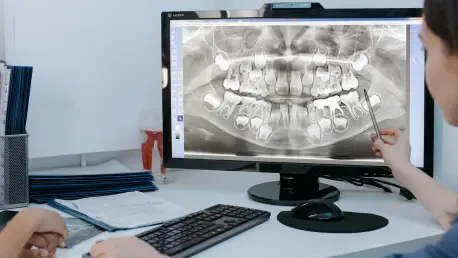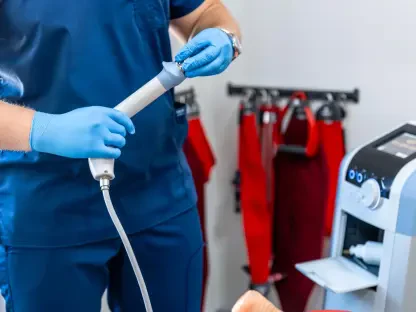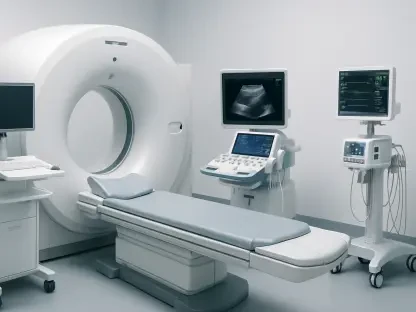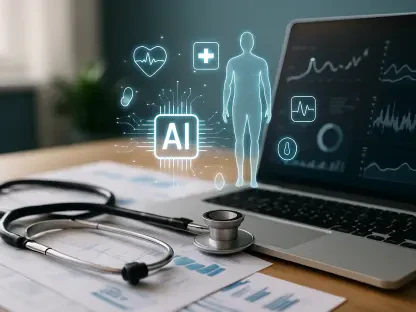In recent years, the healthcare industry has been undergoing a transformative shift driven by digital innovations, and digital radiography stands at the forefront of this revolution. The shift from traditional analog systems to digital radiography detectors signals a profound change in how medical diagnostics are conducted. Digital radiography is characterized by improved precision, reduced radiation exposure, and rapid image acquisition, overcoming limitations of previous technology. With its versatile applications and enhanced diagnostic capabilities, this advanced approach to medical imaging promises improved patient outcomes and operational efficiency. Experts suggest that the digital radiography market will continue its robust expansion through the decade, supported by ongoing technological advancements and increasing demands for efficient healthcare systems.
The Digital Transition in Healthcare Diagnostics
Digital radiography detectors are central to healthcare’s pivot towards a digital-centric approach, potentially redefining established diagnostic protocols. As the demand for higher precision and speed in medical imaging grows, various types of detectors, including Flat Panel Detectors (FPD), Charge-Coupled Device (CCD) Detectors, and Computed Radiography (CR) Detectors, have become indispensable in healthcare settings. This transition not only streamlines the diagnostic process but significantly enhances the accuracy of results, which is crucial in making informed clinical decisions. With digital radiography, immediate access to high-quality images helps reduce wait times and facilitates quicker interventions, thereby fostering more timely and effective treatment options.
The digital transformation in radiography does not merely represent an upgrade in technology; it fundamentally alters the way healthcare providers deliver patient care. The integration of digital systems results in a seamless exchange of information within hospital networks, thus eliminating redundancies and minimizing errors that could arise from manual data handling. Moreover, digital radiography supports real-time analytics and remote diagnostics, allowing healthcare professionals to deliver superior care even in geographically isolated or under-resourced areas. Technological advancements, such as enhanced wireless connectivity and portable designs, further enable the expansion of diagnostic capabilities beyond traditional settings, propelling the industry towards a more accessible healthcare future.
Innovative Applications and Technological Advancements
Digital radiography detectors have found wide-ranging applications across various medical fields, demonstrating their adaptability and necessity in modern diagnostics. These detectors play critical roles in imaging modalities such as X-ray, fluoroscopy, mammography, dental radiography, veterinary radiography, and even non-medical uses like industrial radiography. The ability to cater to diverse diagnostic needs underscores their pivotal role in not only maximizing efficiency and effectiveness in hospitals but also broadening healthcare accessibility across different domains. The detectors’ adaptability to different configurations and applications reinforces their marketability and further accelerates their adoption in healthcare facilities globally.
Continual advancements in digital radiography technologies, particularly in direct and indirect conversion methods, are contributing to improved diagnostic outcomes. Direct conversion technologies are instrumental in achieving precise imaging capabilities crucial for specialties like orthopedics, cardiology, oncology, and dental radiography. Simultaneously, indirect conversion innovations offer enhancements in imaging fidelity and patient comfort through reduced exposure durations. With the ongoing integration of AI-assisted image analysis and 3D reconstruction techniques, these detectors are transforming diagnostic processes and elevating healthcare information systems to a new level of sophistication. This wave of innovation ensures not only optimized patient care but also competitive advantages for healthcare providers and technology vendors alike.
Market Dynamics and Regional Trends
The digital radiography detectors market is emerging as a sector of robust activity and growth, fueled by multiple market dynamics and regional trends. In North America, the presence of an advanced healthcare infrastructure and early technological adoption positions the region as a leader in digital radiography utilization. However, the Asia-Pacific region is increasingly highlighted as a burgeoning market poised for significant expansion. Rising healthcare needs, expansive hospital networks, and supportive policies in countries such as India, China, and Southeast Asian nations underscore the region’s promising potential for adopting advanced imaging technologies.
Market drivers such as the increasing demand for portable radiography detectors and government initiatives promoting healthcare digitization are pivotal in accelerating growth. These portable systems are essential for point-of-care diagnostics, particularly in emergency, intensive care, and remote healthcare settings, offering promising solutions for previously unmet needs. Strategic investments aimed at replacing outdated and inefficient analog systems contribute to the widespread adoption of cutting-edge digital solutions, particularly in emerging markets. Healthcare expenditures are also anticipated to rise, further bolstering the digital radiography market’s development as infrastructure investments surge to meet growing diagnostic demands and elevate health standards.
Competitive Landscape and System Configurations
A dynamic and competitive environment characterizes the digital radiography detectors market, with key players consistently evolving their offerings through rigorous R&D efforts. Prominent companies, such as Fujifilm, Siemens Healthineers, GE Healthcare, Canon Medical Systems Corporation, and Philips, among others, are leading the charge in developing next-generation detectors catering to varied healthcare needs. The escalating competition among manufacturers has led to the introduction of sophisticated detectors with faster processing capabilities, superior energy efficiency, and seamless compatibility with Picture Archiving and Communication Systems (PACS). These advancements deliver significant advantages to healthcare facilities aiming to enhance operational workflows and patient care efficiencies.
System configurations for digital radiography detectors include fixed, mobile, portable, and handheld models, each presenting distinct benefits tailored to diverse clinical environments. Fixed detectors, integral to hospital imaging departments, offer robust capabilities for precise diagnostics. Meanwhile, mobile and portable systems augment on-site diagnostic flexibility, crucial for outpatient settings and emergency care. Handheld models demonstrate substantial utility in remote and constrained clinical environments where immediate imaging precision is required. The provision of these varied configurations magnifies the demand for digital radiography solutions, fortifying the market’s growth trajectory across a multiplicity of healthcare settings.
Future Prospects in Digital Radiography
Digital radiography detectors are at the forefront of healthcare’s shift towards a more digitally-focused approach, offering the potential to transform traditional diagnostic practices. As the need for faster and more precise medical imaging intensifies, detectors such as Flat Panel Detectors (FPD), Charge-Coupled Device (CCD) Detectors, and Computed Radiography (CR) Detectors have emerged as vital tools in healthcare environments. This technological evolution not only streamlines the diagnostic workflow but significantly improves accuracy, which is essential for making informed clinical decisions. The instant access to high-quality images provided by digital radiography reduces wait times, enabling quicker interventions and enhancing treatment effectiveness.
This digital shift in radiography is more than just an upgrade; it fundamentally changes the manner in which care is delivered. By integrating digital systems, hospitals can more efficiently share information across networks, effectively eliminating redundancies and reducing errors linked to manual data handling. Furthermore, digital radiography facilitates real-time analytics and remote diagnostics, empowering healthcare professionals to deliver superior care, even in remote or underserved locations. Advances in technology, including better wireless connectivity and portable designs, enhance diagnostic capabilities, pushing healthcare towards an increasingly accessible future.









